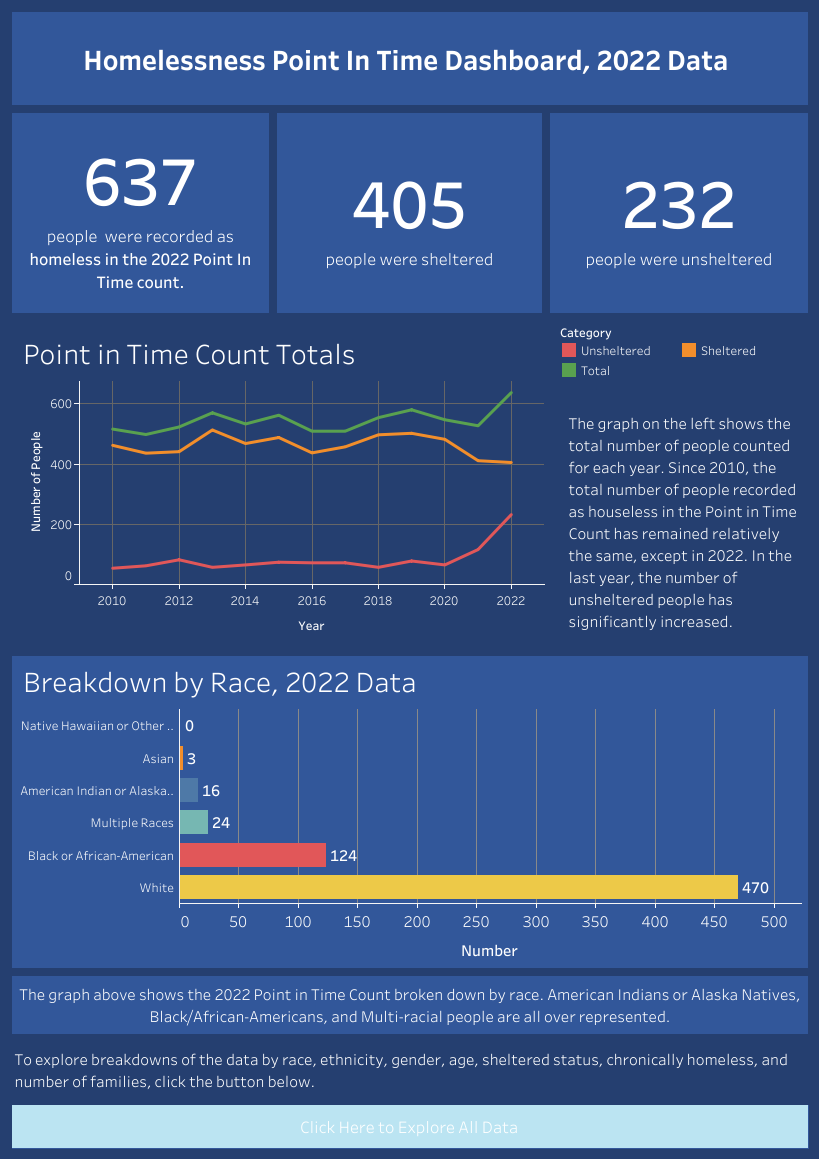How many people are homeless in Asheville? 2023 point-in-time count gets underway soon

ASHEVILLE - Last year's results were staggering. Asheville's annual point-in-time count offers a single night census of the area's homeless population, conducted each year in January, and though 2022 numbers were up 21% total, with the unsheltered count doubled, this year a local expert says he still expects an increase, but perhaps a less substantial one.
At the Jan. 12 Homeless Initiative Advisory Committee meeting, the board heard an update from Emily Ball, Homeless Strategy Division Manager, on 2023 point-in-time count, which will be held Jan. 31.
Previous coverage:Number of homeless people in Asheville up 21% since 2021, unsheltered number doubles
More:Asheville Homeless Services: Increase in city unsheltered population expected after count
Marcus Laws, homeless services director with Homeward Bound, says he anticipates numbers will see a slight increase due to people moving to the area, bolstered by "changes in dynamics" with rising rents, and availability of housing stock.
At AHOPE, a daytime shelter operated by Homeward Bound, Laws said he's noticed "more new faces" this winter. Another area of concern, he noted, is the aging population, as more adults move into retirement age, the trend is mirrored among those who are unhoused.

At AHOPE, the focus is specifically people who are unsheltered, meaning they are sleeping outside or in "a place not designed for or ordinarily used as a regular sleeping accommodation," which includes abandoned buildings, train stations, camping grounds (encampments) or cars.
“I don’t anticipate it’s going to be double," Laws said of the unsheltered population. "I just think it’s going to be something that’s noticeable.”
More:Water outages: Asheville chose to cut off the south from water; Melton made the call
The count is mandated by U.S. Housing and Urban Development for all Continuums of Care, of which the city of Asheville is the lead for Asheville and Buncombe County, and results inform federal resources made available to address homelessness.
Results will be reported to HUD first and later to the public, likely in April, Ball said.
As for any trends she anticipates, Ball said she will wait to see what the data says.
She did note that looking at historic data for over a decade, the population remained "pretty static" until the COVID-19 pandemic, when numbers spiked.
“It’s so important," Ball said of the count. "For me it is our only comprehensive data set in the community, right now, so really our best opportunity to understand who our homeless population is.”
More:Asheville Council appoints retired Marine, ROTC instructor Jesse Warren to school board
Last year, volunteers led by professional street outreach workers or other homeless service providers, including Homeward Bound and Sunrise Community for Recovery and Wellness, fanned out across Buncombe County to conduct the count.
It quantifies people who meet the federal definition of "literal homelessness," meaning they are staying in emergency shelter or transitional housing, which falls into the "sheltered category," or who are unsheltered.
As well as a population count, demographic data, history of the person's homelessness, household composition and characteristics, is captured by the count. Participation is voluntary.
More:Study: Asheville homes stay on the market 6% longer, sale prices up from 2021
One member of HIAC, Jaime Benshoff, has lived experience with homelessness, and said she remembers being at AHOPE when a count was conducted. When she was asked about her situation, she was "suspicious," and said that her responses were evasive.
Ball said volunteers will be trained to try to put people being surveyed at ease, and ensure they know the purpose of the count.
Historical data in Asheville and Buncombe County?
Each count is conducted in January of that year, meaning the 2020 count occurred before the pandemic. All data reported to HUD since 2007 can be found online at hudexchange.info/programs/hdx/pit-hic/
2020:
Sheltered: 482
Unsheltered: 65
Total: 547
2021:
Sheltered: 411
Unsheltered: 116
Total: 527
2022:
Sheltered: 405
Unsheltered: 232
Total: 637
Sarah Honosky is the city government reporter for the Asheville Citizen Times, part of the USA TODAY Network. News Tips? Email shonosky@citizentimes.com or message on Twitter at @slhonosky.
This article originally appeared on Asheville Citizen Times: Asheville Point in Time Count 2023 homeless numbers

